Resilient Living Week
Design resilience, in its broadest sense, refers to the adaptability of the built environment and its responsiveness to change. The unpredictability of our climate; the increasing prevalence of environmental catastrophes, ecological collapse, displacement and global warming are challenges that architects must factor into the way we design, deliver and future-proof buildings.
We need to be bold and imaginative when searching for solutions. A culture of single-use and demolition first, repercussions second, has to go. Recycling, modularity, and the sustainable co-location of uses to reduce car dependency and the ancillary carbon footprint of the built environment can be commonplace if we replace old tools with creative, interoperable systems, leaving a positive legacy for future generations in the process.
Last month, Assael hosted a week-long event on the theme of Resilient Living, forming the latest instalment in our Design Resilience Campaign.
Intentionally experimental, Resilient Living Week sought to examine blind spots in the conventional approach to design, and explore the radical action needed to tackle the climate and ecological crisis head-on. Through workshops, presentations and a future-gazing design competition, we wanted to stretch how far the built environment has to go to adapt to a new socio-economic, environmental and cultural normal.
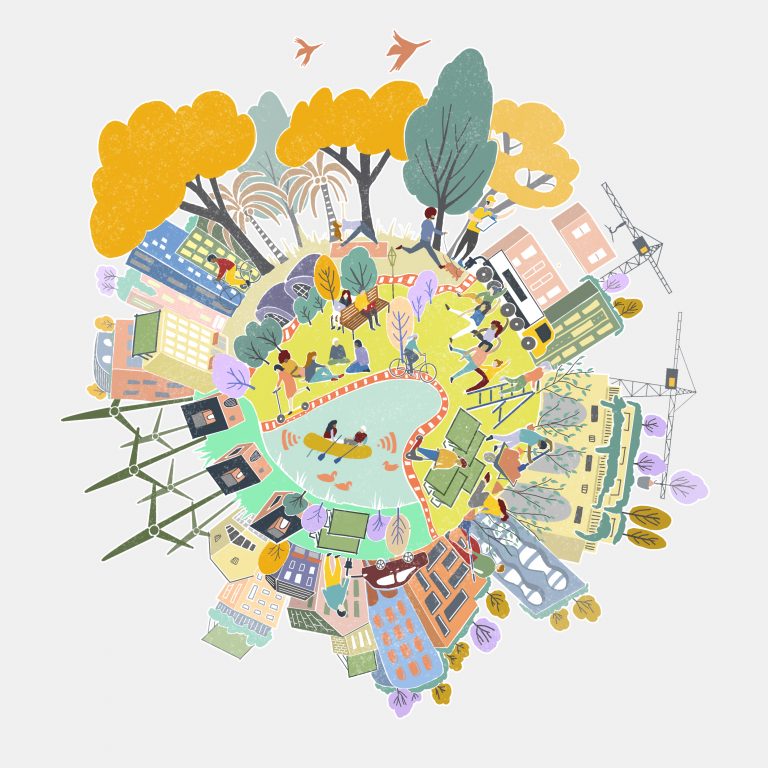
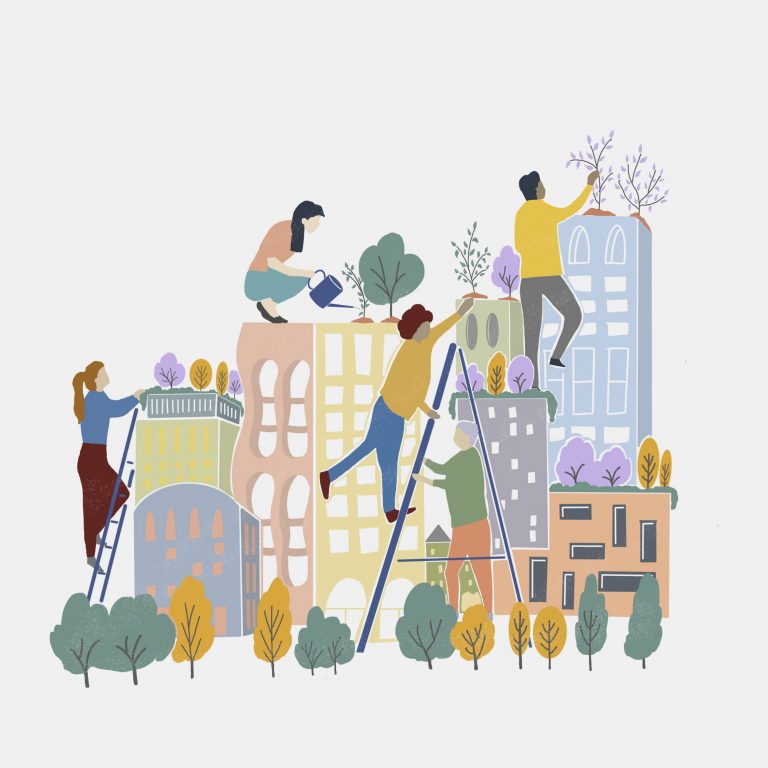
Designing for resilience
The week kicked off with a presentation from Jonathan Smales, former Managing Director of Greenpeace, and CEO of Human Nature, a sustainably-led placemaking consultancy. Together with Michael Manolson, another former director of Greenpeace, Jonathan’s conviction to establish Human Nature came from the recognition that “climate breakdown and the collapse of the natural world are the greatest challenges humanity has ever faced.”
The message that “transformation must begin with where and how we live” set the stage for inventive ideas to reduce dependencies inherent in the built environment, from the materials traditionally used in construction, to our dependence on cars. Designing for a “low-impact life” means realising regenerative urbanism, the circular economy and compatibility with renewable energy systems.
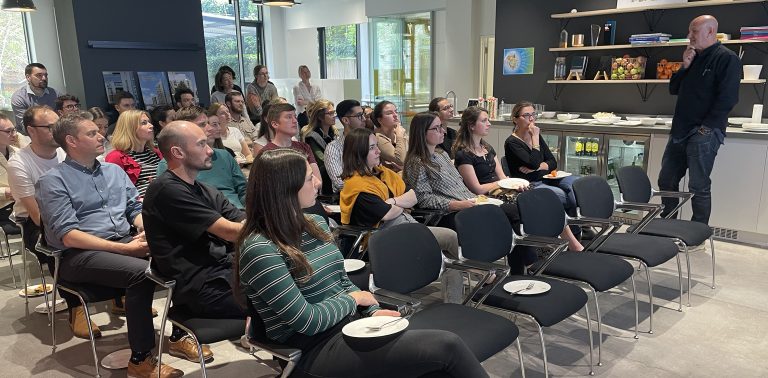
The ideas competition
Taking inspiration from Jonathan Smales, we launched an Ideas Competition on Earth Day that centred around a re-evaluation of how we create cities and communities that prioritise resilient living, which will mean we are less at the mercy of the ongoing and worsening climate crisis.
Our three groups worked independently to find solutions and respond to the broad, thought-provoking brief of designing for adaptation, mitigation, and/or social, community and climate resilience. The groups generated concepts that focused on three key issues:
- how to regenerate high streets
- what it would mean to introduce a carbon tax
- how our residential streets would look when we embrace resilient living
…and were presented to our expert panel of judges:
- Blanche Cameron, Lead for Environmental Design and Greening Cities modules, The Bartlett School of Architecture, UCL
- Stephen Gallacher, Associate Principal and Sustainability Lead, Elementa
- Smith Mordak, Director of Sustainability and Physics, Buro Happold
- David Cheshire, Sustainability Director, AECOM
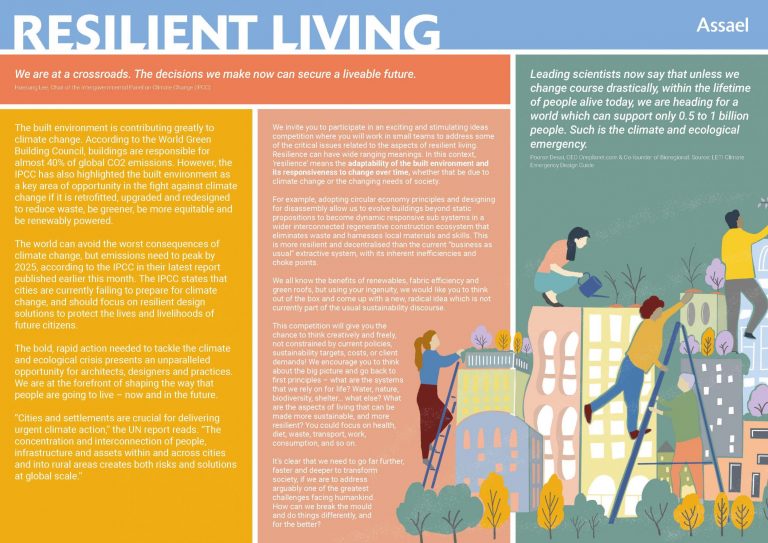
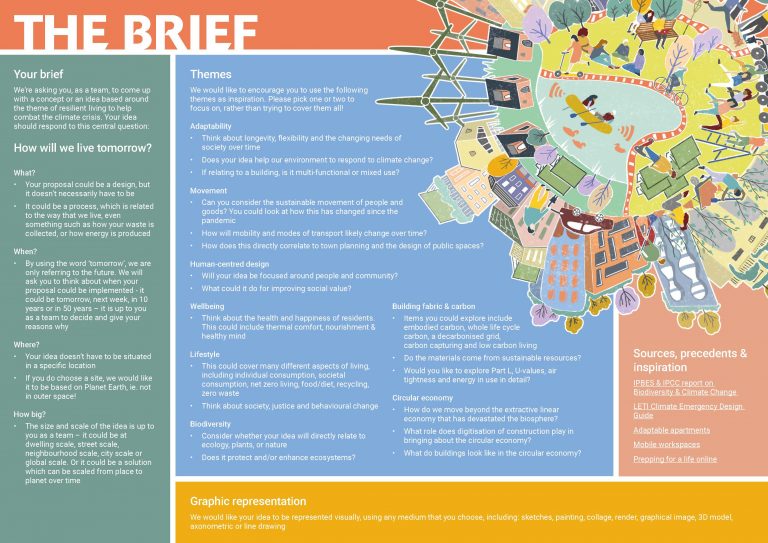
Idea one: NeighbourHub
Our high streets are stagnating. The popularity of high streets was already declining before the pandemic drove even the high street stalwarts out of the shops and cafés and into their living rooms to shop online for anything other than necessities.
While this is partly to do with the seemingly universal shift to a preference, or at least a guilty pleasure, for online shopping, it is also about the experience that the high streets present. Shops appear derelict, and people consistently cite the heavy traffic as a major deterrent. The high street in its current form is not resilient. Without major intervention and gear change, it is concerning to think what the high streets will look like and how they will be used in five to ten years. A resilient living approach to the high street would see an invigoration and evolution of high streets as we know them.
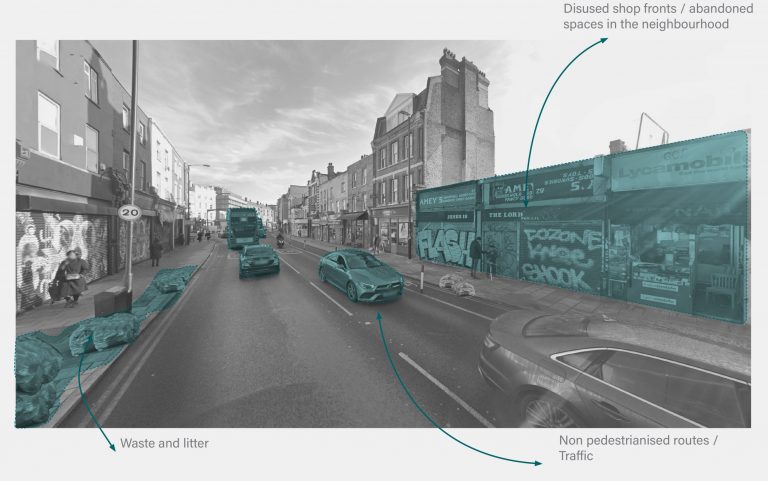
The NeighbourHub addresses this issue. It assesses the greatest hurdles high streets face in getting patrons to spend time there: waste and litter, too much traffic and disused or abandoned shop fronts.
The team proposed introducing a toolkit to bring the high streets back to life. This comprised a Mobility Hub, promoting health and wellbeing, encouraging better ways of transporting, encouraging locally sourced produce, and consciously tackling waste. The local toolkit would be supplemented by government policy that addresses mobility and tracks resilience with points awarded for resilient living.
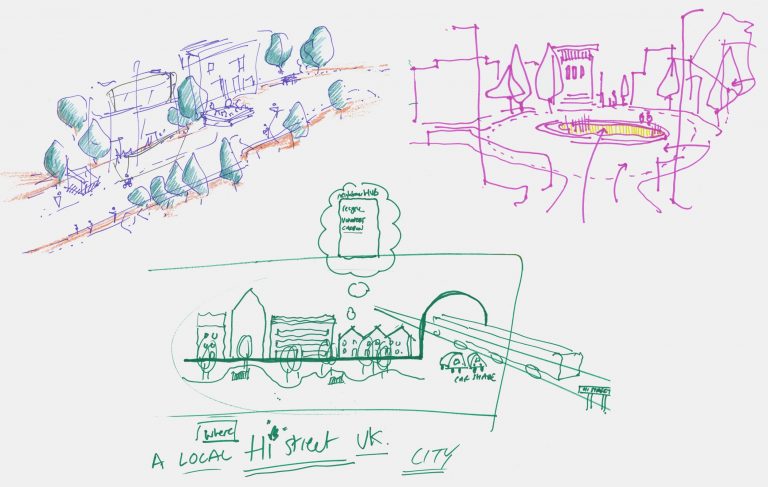
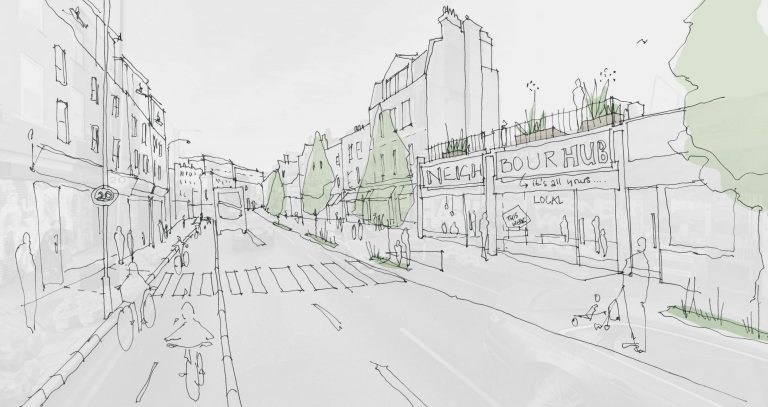
Idea two: Area of Local Resilience
How, if at all, a carbon tax would work in the UK, was discussed through the second idea – creating Areas of Local Resilience (AOLR). The AOLR looks at what it will take, and how long it will take, to achieve a neighbourhood that is resilient with priorities towards biodiversity and sustainability, underpinned by a carbon tax.
In its simplest form, a carbon tax would mean citizens are taxed based not on wealth but on their carbon emissions. Currently, there are 27 nations around the world who have some form of carbon tax, including Denmark, Japan and New Zealand. A carbon tax would ideally incentivise a reduction in carbon emissions whilst also resulting in an increase in investment in renewable energy sources.
However, introducing a carbon tax is not a straightforward process. There will be significant hits to industries who will be unable to seamlessly pivot away from activities that produce high carbon emissions.
Despite this, the Area of Local Resilience team presented an ideal situation.
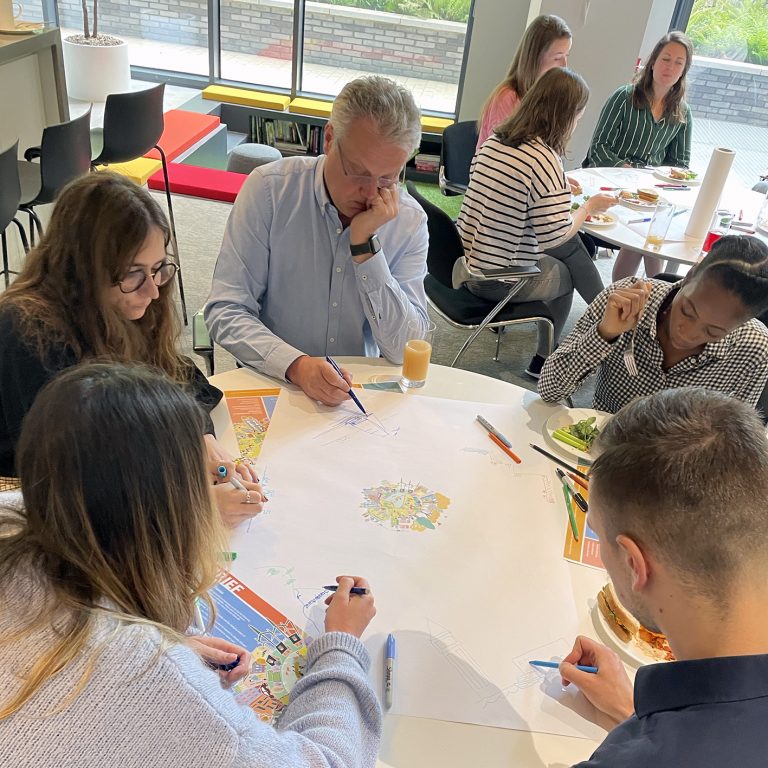
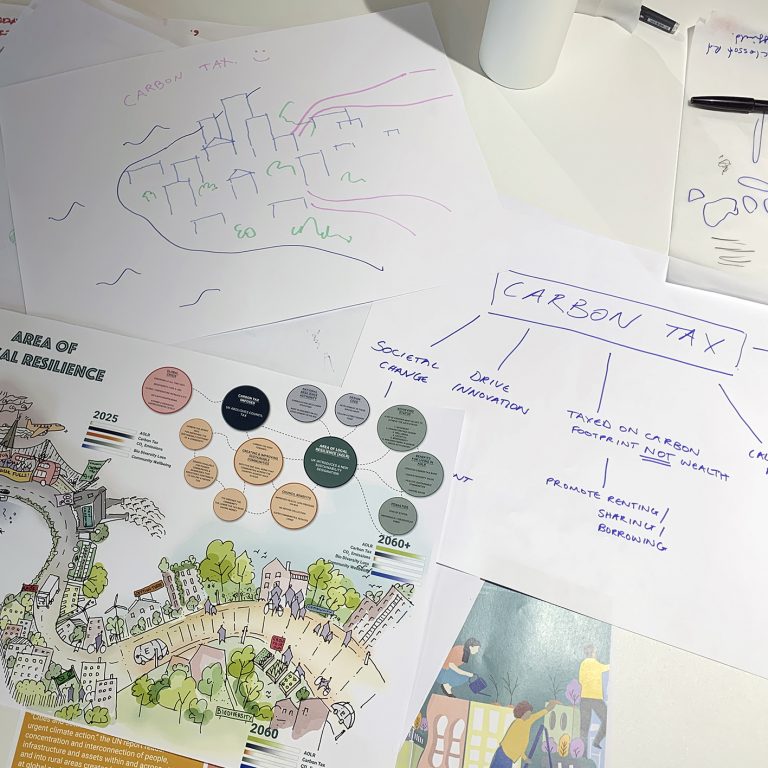
The presentation depicts where we are now, in 2022, as a system that does very little to counter pollution and emissions, despite outrage about issues like fossil fuels. As we move down the timeline towards an Area of Local Resilience, a carbon tax is introduced, and we see zero-emission buses driving down the street.
By 2040, we’re “getting there”. There are more trees, less emissions and more people on bikes. And as we approach 2060, we see the most significant changes come into play. The streets are teeming with greenery, more people are on the streets and socialising, and the vehicles on the streets are electric.
Places that achieve ‘Area of Local Resilience’ status will benefit from a lower carbon tax band and will be governed by the newly formed ‘National Resilience Authority.’ All new development in these areas will adhere to a strict design code.
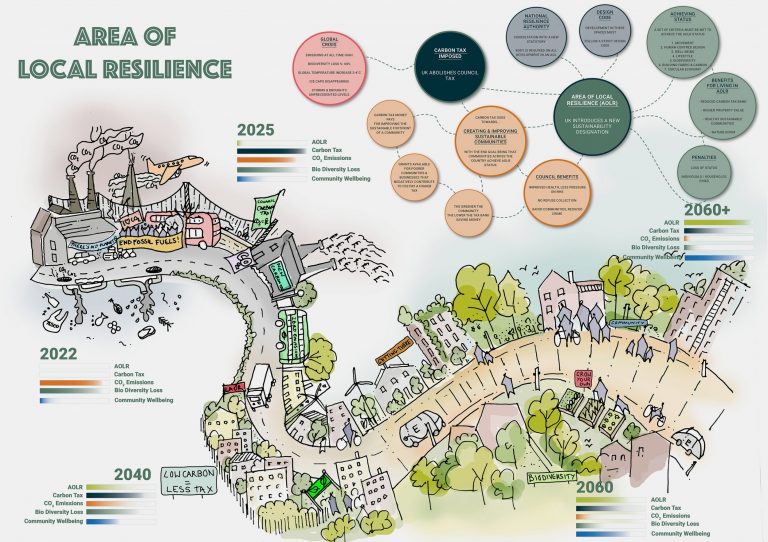
Idea three: The Resilient Street
Currently, most residential streets in the UK are not built for resilient living. The archetypal urban residential street is made up of mostly Victorian or Edwardian terrace two-storey houses. On average, there is one car per household and each house is 21 metres across the street from the opposite row of houses. The streets themselves have a utilitarian approach, with little to no space for the community and are dominated by cars.
The proposed ‘Resilient Street’ would be a significant departure from what we are used to seeing on the average suburban street in the UK. Rather than serving functionality over all else, a resilient street would be a regenerative community space.
The vision would include a Resilient Street Charter; streets designed to prioritise people and biodiversity, and most controversially, there would be no car parking.
The team outlined how there would be a phased approach to achieving the Resilient Street, and that by 2050, it would be possible to recognise this group’s vision.
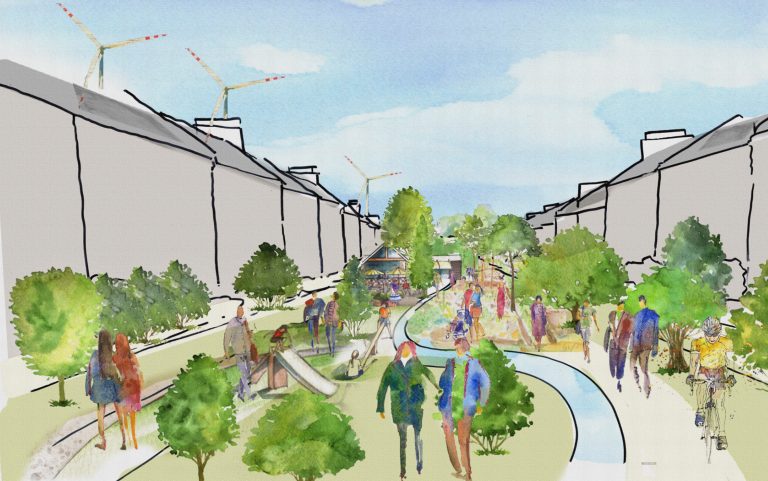
The three teams presented their ideas to the impressive expert panel of judges at our Resilient Living evening. The presentations generated very insightful discussion and debate, engaging all who attended the event.
After a long period of deliberation, with the scores all within one point of each other, the judges selected the NeighbourHub group as the winners, but agreed that the best solution for Resilient Living for the future would be a combination of all three ideas.